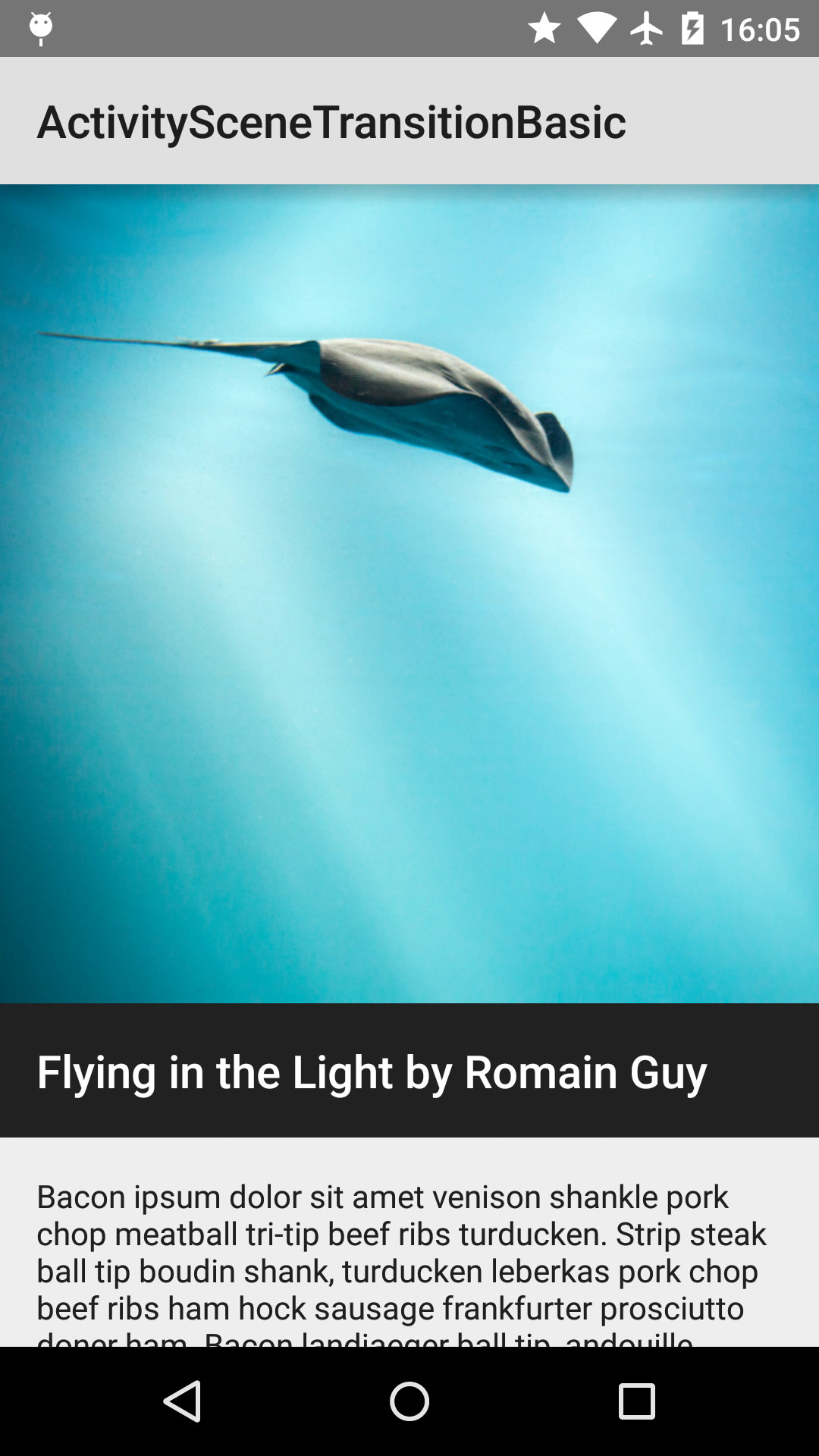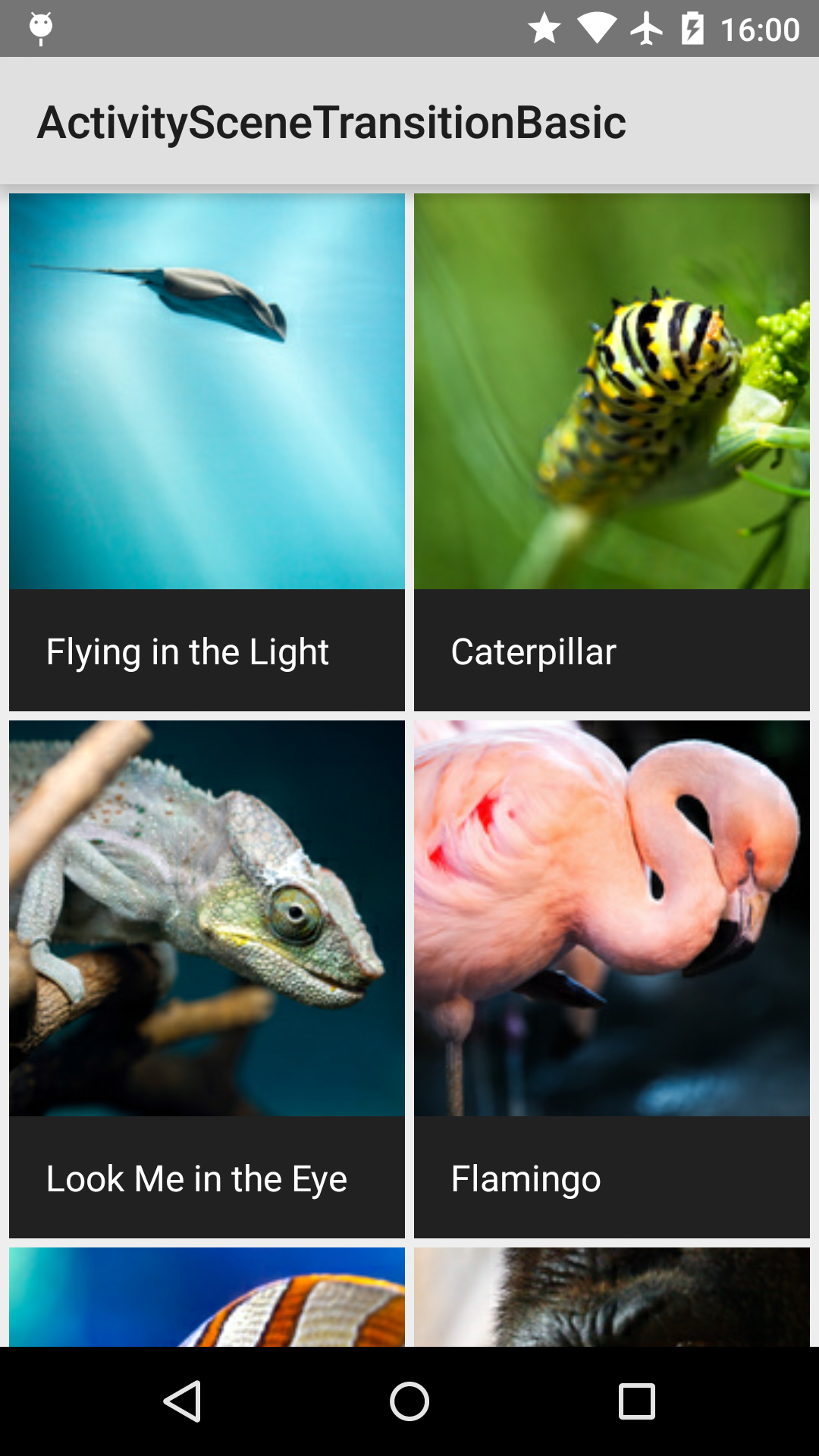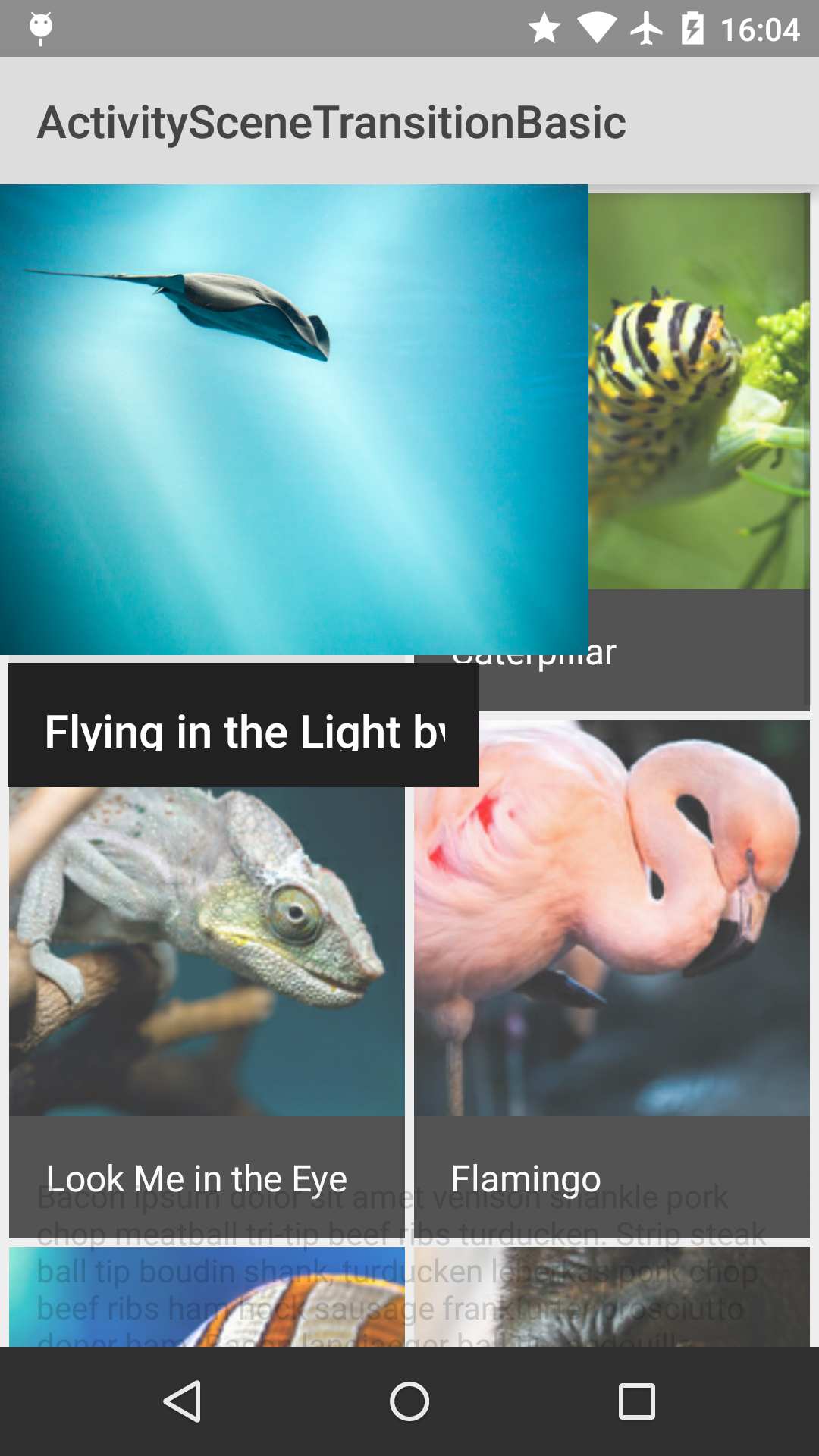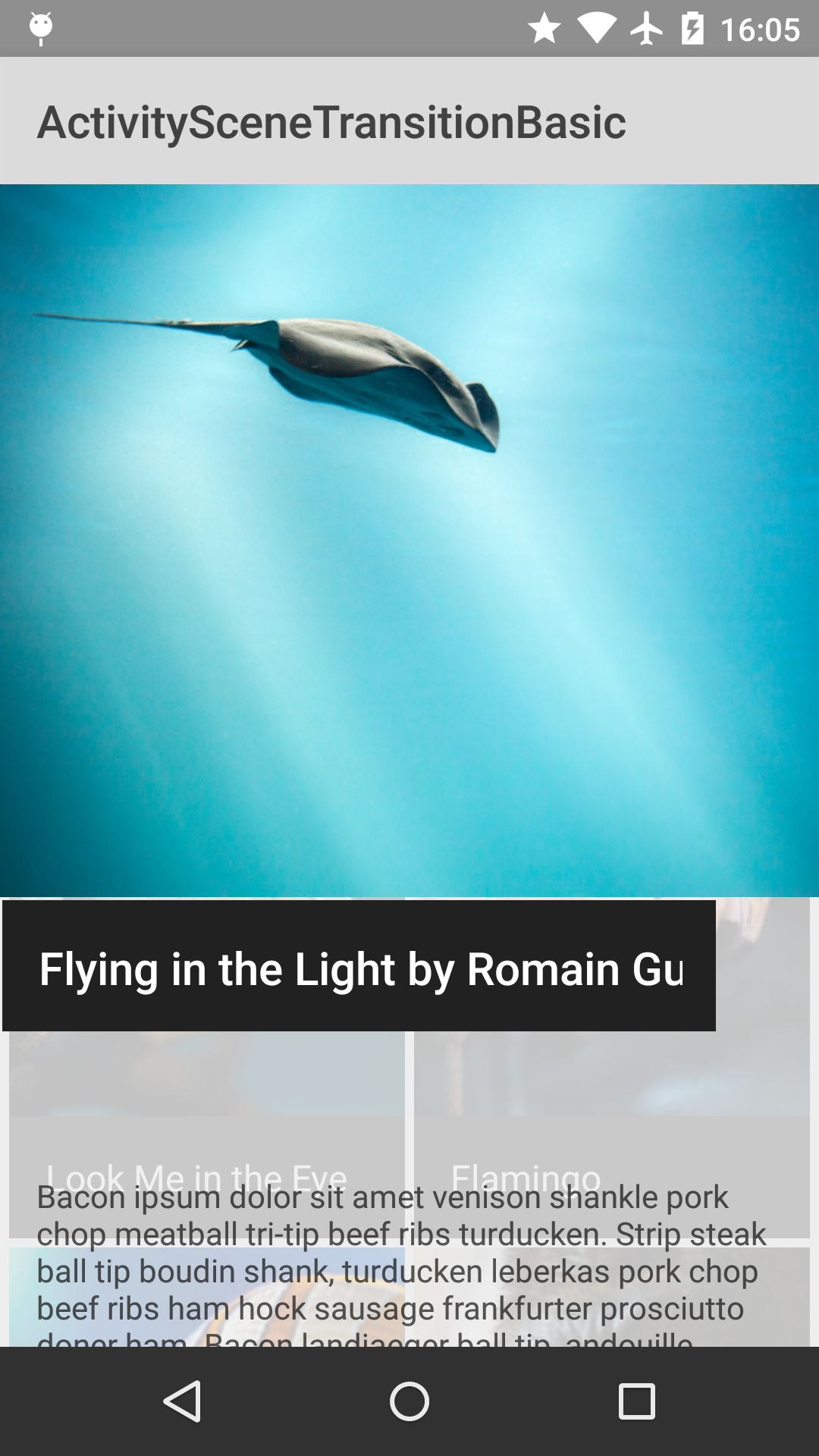Android ActivitySceneTransitionBasic Sample
This sample shows how to use scene transitions from one Activity to another in Lollipop. Uses a combination of changeImageTransform and changeBounds to transition a grid of images to an Activity with a large image and detail text.
Introduction
Android Lollipop has introduced the ability to transition between activities by using a shared element. This sample demonstrates how to do this using the theme of your application.
See Defining Custom Animations for all the details on how to do this.
Pre-requisites
- Android SDK 26
- Android Build Tools v26.0.1
- Android Support Repository
Screenshots




Getting Started
This sample uses the Gradle build system. To build this project, use the "gradlew build" command or use "Import Project" in Android Studio.
Support
- Google+ Community: https://plus.google.com/communities/105153134372062985968
- Stack Overflow: http://stackoverflow.com/questions/tagged/android
If you've found an error in this sample, please file an issue: https://github.com/googlesamples/android-ActivitySceneTransitionBasic
Patches are encouraged, and may be submitted by forking this project and submitting a pull request through GitHub. Please see CONTRIBUTING.md for more details.
License
Copyright 2017 The Android Open Source Project, Inc.
Licensed to the Apache Software Foundation (ASF) under one or more contributor license agreements. See the NOTICE file distributed with this work for additional information regarding copyright ownership. The ASF licenses this file to you under the Apache License, Version 2.0 (the "License"); you may not use this file except in compliance with the License. You may obtain a copy of the License at
http://www.apache.org/licenses/LICENSE-2.0
Unless required by applicable law or agreed to in writing, software distributed under the License is distributed on an "AS IS" BASIS, WITHOUT WARRANTIES OR CONDITIONS OF ANY KIND, either express or implied. See the License for the specific language governing permissions and limitations under the License.
compile "com.android.support:support-v4:26.1.0"
compile "com.android.support:support-v13:26.1.0"
compile "com.android.support:cardview-v7:26.1.0"
compile "com.android.support:appcompat-v7:26.1.0"
compile 'com.squareup.picasso:picasso:2.4.0'
compileSdkVersion 26
minSdkVersion 21
targetSdkVersion 26
package com.example.android.activityscenetransitionbasic.tests
versionCode 1
versionName 1.0
package com.example.android.activityscenetransitionbasic
versionCode 1
versionName 1.0
uses-permission
- android.permission.INTERNET
MainActivity
DetailActivity
MainActivity
Our main Activity in this sample. Displays a grid of items which an image and title. When the user clicks on an item, {@link DetailActivity} is launched, using the Activity Scene Transitions framework to animatedly do so.
Called when an item in the {@link android.widget.GridView} is clicked. Here will launch the {@link DetailActivity}, using the Scene Transition animation functionality.
Now create an {@link android.app.ActivityOptions} instance using the {@link ActivityOptionsCompat#makeSceneTransitionAnimation(Activity, Pair[])} factory method.
{@link android.widget.BaseAdapter} which displays items.
DetailActivity
Our secondary Activity which is launched from {@link MainActivity}. Has a simple detail UI which has a large banner image, title and body text.
Set the name of the view's which will be transition to, using the static values above. This could be done in the layout XML, but exposing it via static variables allows easy querying from other Activities
Load the item's thumbnail image into our {@link ImageView}.
Load the item's full-size image into our {@link ImageView}.
Try and add a {@link Transition.TransitionListener} to the entering shared element {@link Transition}. We do this so that we can load the full-size image after the transition has completed. * @return true if we were successful in adding a listener to the enter transition



